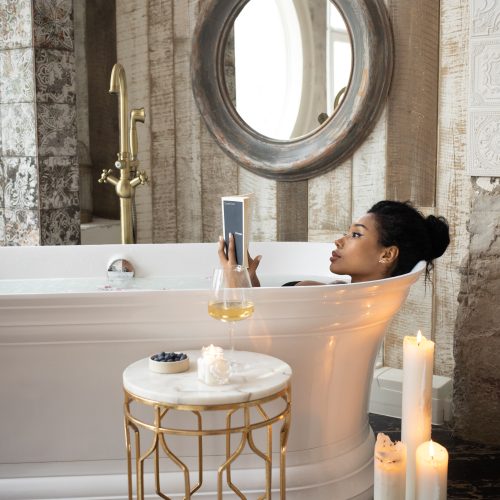The Problem With Being Too Creative: How to Share Unique Ideas Effectively
When it comes to creative ideas, it can be challenging to communicate them effectively. Creativity is an essential part of any successful project, but communicating a creative idea can be a daunting task. It’s important to be able to communicate your unique ideas in a way that resonates with your audience and captures their attention.
Indeed, communication itself could kill a creative idea. The more you describe an idea, the more complex and the less appealing it sounds. This, unfortunately, has to do with the way the creative mind thinks. Creativity is often a visual element that can not be encompassed by words. However, the dilemma is that creative professionals must be able to communicate their ideas to gain the approval of the team, shareholders, or clients. Being creative is the key to being unique and beating your competitors. Unfortunately, many brands suffer, not because they lack creativity but because they don’t understand their creative thoughts. So how do you share a creative idea without diluting it?
Draw Them
Drawing your creative ideas can be a powerful tool for sharing them effectively. People are naturally more likely to understand visual explanations. Wordly explanations are complex, and they may not tap into emotional recognition, unlike a visual element. When trying to communicate a unique idea, it can be helpful to create a visual representation of it. You don’t need to draw at a professional level. This could be in the form of a diagram, an illustration, or even a simple sketch. More often than not, the tools available on your laptop can get the job done. You can use a simple drawing app, such as the ones here https://setapp.com/lifestyle/top-5-simple-drawing-apps-for-mac, to help people visualize the core aspects of your idea. Does it need to be perfect? Of course not! By having a simple visual representation, your audience will be able to better grasp the concept you’re attempting to communicate.
Additionally, drawing your ideas can help you focus on your concept and develop new ideas. Seeing your creative thoughts in a visual form can help you to organize them more effectively, as well as give you inspiration for more ideas.
When drawing your ideas, include enough details to explain your concept fully. Also, think of ways to make the visual representation more engaging and exciting, such as adding colors and images that draw attention to your idea. Drawing your creative ideas enables you to communicate them more effectively and helps your audience appreciate the underlying concept.
Build a Prototype
Having a physical representation of your idea can be a great way to communicate it to others. Building a prototype is one of the best ways to do this. By creating a tangible representation of your concept, you are allowing people to not only visualize your vision but also perceive it in 3D.
Creating a prototype doesn’t have to be complicated. If you’re on a tight budget, cardboard cutouts or paper models can be great tools. For instance, if you are working on designing a new exhibition stand, you could cut out simple shapes from cardboard that mimic the shape and size of your stand at the venue. You can then put the cardboard cutouts together in different ways until you’ve created your desired design. There are plenty of helpful tutorials, such as this one https://www.youtube.com/watch?v=fj2aAn3pUwk, to teach you the basics of cardboard prototyping. This allows others to see what your design looks like and understand how it functions.
You can also use paper models for simple designs like furniture, toys, clothes, or any other product with basic shapes. Paper models can be constructed using simple materials like scissors, tape, markers, and glue. With just these few items, you can quickly create a basic model of your concept and present it to other people.
Prototypes don’t have to be perfect to be effective. What’s important is that they give an accurate representation of what your idea looks like.
Enact It
When it comes to communicating a unique idea, enacting it can be a powerful tool. It allows you to put yourself in someone else’s shoes and show them exactly how your idea works in a tangible way. You can demonstrate the idea or concept in a physical environment, showing how it fits into the real world and how it could potentially be used.
There are several ways to enact a creative scenario. First, you can create a video or short film to illustrate the concept you’re trying to communicate. This can be done with live actors, props, and costumes or with animation. Additionally, you can design a 3D model of your idea and use it as a physical prop to act out the idea. Finally, you can construct a scale version of your idea and demonstrate how it works in real life.
Enacting your idea can make it easier for others to understand what it is and how it could potentially be useful. It also shows that you’ve thought about the idea from all angles and have considered the practicality of it. Through enacting your idea, you can help make it more accessible to other people and increase the likelihood that they will see the value in it.
Explain the Purpose
When trying to share a unique idea, it is often helpful to explain the purpose rather than the idea itself. Explaining the purpose allows you to provide context for your idea and make it easier for others to understand. For example, you can explain why you think that particular feature or technology is important or necessary rather than talking about its technicality. Doing this will make it easier for others to connect the dots and comprehend your idea.
In addition, explaining the purpose of your idea will also help you communicate its impact on other areas. You can discuss how it might help customers, improve efficiency, or increase revenue. Doing this will give your audience a better understanding of why they should care about your idea.
By taking the time to explain the purpose of your idea rather than just the idea itself, you will be able to communicate your unique ideas effectively. Doing this will make it easier for others to understand and appreciate the value of your ideas.
Creative professionals can struggle to gain the approval of their peers or clients when they bring a new idea to the table. Yet, where there is creativity, there should be creative communication.
This post is in collaboration, however all opinions are my own.



Leave a Reply
You must be logged in to post a comment.